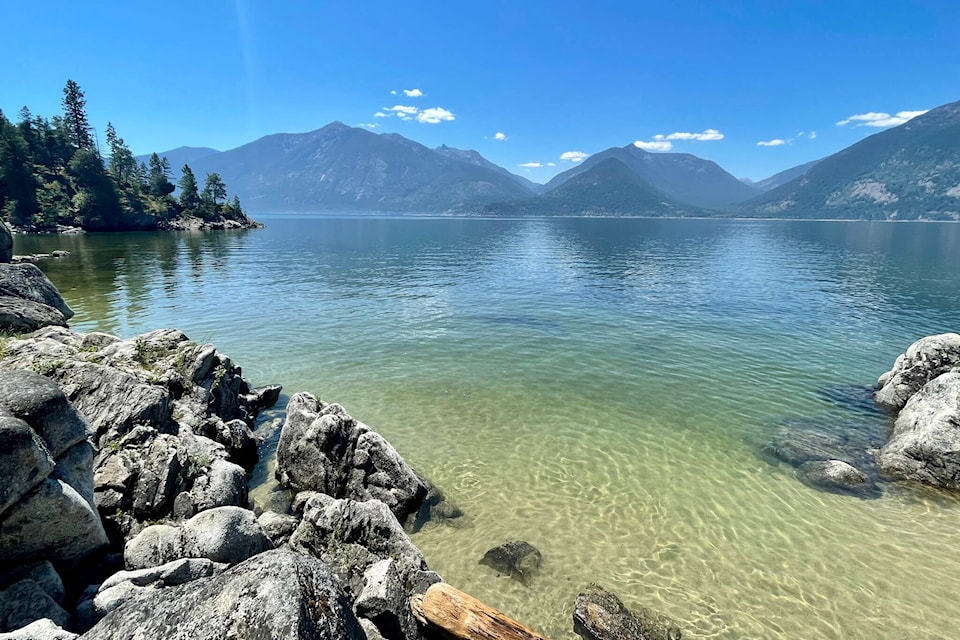This is the first of four articles submitted by Living Lakes Canada (LLC), the respected Columbia Basin-based water stewardship group that works to monitor and protect Canada’s lakes, rivers, wetlands, and watersheds.
After a record-breaking summer of heat, drought, and fires, experts in the Columbia Basin are stressing the importance of water monitoring and watershed management to secure our water supplies.
“Watersheds are complicated,” said Greg Utzig, a conservation ecologist based in the Columbia Basin. “There are lots of different pieces, and if we are going to understand how these watersheds react to climate disruption, we have to have a better understanding of how the various parts interact. This is where water monitoring comes in, by helping us understand how these systems work and how fast they are changing,”
Earlier this year, LLC hosted a webinar, during which Utzig, along with Dr. Martin Carver, a Nelson-based hydrologist, discussed implementing the “water balance” approach in the Columbia Basin.
They spoke about the urgency for collecting and understanding water data in a time of climate change. A water balance equation can be used to determine the quantity of water moving in and out of a system. This is valuable information when considering future water needs.
“We are all familiar with the ongoing and rather relentless increase in temperature that is occurring across the planet, including within the upper Columbia Basin,” said Dr. Carver.
He pointed out that one of the most obvious consequences in the Columbia Basin is a change in the timing of seasonal run-off. There has been an increase in precipitation during the winter months, which causes melting to happen earlier due to higher spring temperatures. This leads to an earlier freshet and sometimes higher flow rates. Toward the end of the now hotter and drier summers, streamflow is going lower for longer periods. At the same time, evaporation rates from lakes and wetlands are increasing due to the warming summer temperatures, potentially resulting in an overall loss of water despite the increase in winter precipitation.
“We may see a decline of up to 20 per cent in September flows due to the eventual loss of glaciers in some watersheds,” said Carver.
The two experts stressed that now is the time to get serious about monitoring how climate change is impacting local watersheds. By the 2050s, average seasonal temperatures in the region are expected to increase by three to five degrees.
“It matters a lot because communities and ecosystems are highly affected by these changes in water dynamics,” said Dr. Carver. “Drinking water needs, agriculture irrigation demands, flooding, and landslides, (all) have consequences for community well-being, infrastructure, and public safety. Plant and animal communities are also greatly affected.”
In the Columbia River Basin, climate change impacts have been recognized and discussed by many communities for years, resulting in the establishment of local water monitoring programs such as Kootenay Watershed Science. More recently, a four-year agreement between LLC and Fisheries & Oceans Canada was established to survey the shorelines of priority lakes. These surveys assess ecological changes and urban development as part of a program called Foreshore Integrated Management Planning. To date, seven lakes across the West and East Kootenays have been surveyed. Monitoring groundwater levels is also taking place across the region through LLC’s Columbia Basin Groundwater Monitoring Program.
“A key message here is that there is an urgency to collect water data across the upper Columbia Basin in a structured and science-based manner to prepare ourselves for the changes that are reshaping our environment,” said Dr. Carver.
The next article in this series will focus on the new initiative that’s underway to establish a unified water monitoring framework in the Columbia Basin that reflects local priorities.
READ MORE: Our Precious Water: The Columbia River Treaty
READ MORE: Our Precious Water: The Columbia River Drainage Basin
